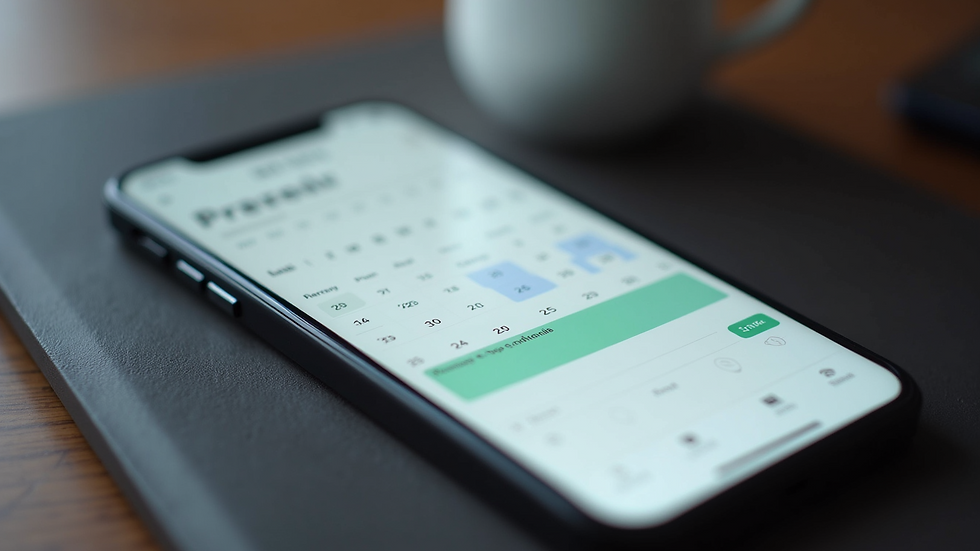Mastering Effective Time Management Techniques
- kzeigler22

- Jul 30
- 4 min read
Time is the one resource we all share equally, yet it often feels like there’s never enough of it. I’ve been there—juggling meetings, deadlines, and endless to-do lists. But here’s the good news: mastering effective time management tips can transform your day, your work, and your life. Ready to take control? Let’s dive in.
Why Effective Time Management Tips Matter
Ever wonder why some people seem to get so much done while others struggle to keep up? It’s not magic. It’s smart time management. When you manage your time well, you reduce stress, increase productivity, and create space for what truly matters.
Think about your typical workday. How often do you get distracted? How many tasks do you start but never finish? Effective time management tips help you focus on what’s important, avoid burnout, and deliver results consistently.
Here’s a quick example: Instead of tackling your entire to-do list at once, prioritize tasks by urgency and impact. That way, you’re not just busy—you’re productive.

Practical Effective Time Management Tips You Can Use Today
Let’s get practical. Here are some effective time management tips that I use daily—and you can too.
Plan Your Day the Night Before
Before you call it a day, jot down your top 3 priorities for tomorrow. This simple habit sets you up for success and reduces morning decision fatigue.
Use Time Blocks
Allocate specific chunks of time to tasks. For example, block 9 AM to 10 AM for emails, 10 AM to 12 PM for project work. This keeps distractions at bay and sharpens focus.
Say No More Often
It’s tempting to say yes to every request, but that’s a fast track to overwhelm. Protect your time by politely declining or delegating tasks that don’t align with your priorities.
Take Breaks
Working non-stop isn’t sustainable. Short breaks refresh your mind and improve concentration. Try the Pomodoro Technique: 25 minutes of work, 5 minutes of rest.
Limit Multitasking
Multitasking sounds efficient but often reduces quality and speed. Focus on one task at a time for better results.
Leverage Technology
Use apps and tools to automate reminders, track tasks, and organize your calendar. But don’t let tech become a distraction—set boundaries.
By applying these tips, you’ll notice a shift. Your days will feel more manageable, and your output will improve.

What is the 7 8 9 Rule for Time Management?
You might have heard about the 7 8 9 rule. It’s a simple yet powerful guideline to balance your day effectively.
7 hours of work
Focused, productive work time without distractions.
8 hours of rest
Quality sleep to recharge your body and mind.
9 hours of personal time
This includes commuting, meals, family, hobbies, and self-care.
Why does this matter? Because managing your time isn’t just about work. It’s about balance. When you respect these boundaries, you avoid burnout and maintain high performance.
Try tracking your day for a week. How close do you come to this 7-8-9 split? Adjust where needed. You’ll find that honoring this rhythm boosts your energy and focus.

How to Prioritize Like a Pro
Prioritization is the secret sauce of effective time management. But how do you decide what deserves your attention first?
Start with the Eisenhower Matrix. It divides tasks into four categories:
Urgent and important – Do these now.
Important but not urgent – Schedule these.
Urgent but not important – Delegate if possible.
Neither urgent nor important – Eliminate or minimize.
This method helps you focus on what truly moves the needle. For example, preparing a client presentation due tomorrow is urgent and important. Checking social media notifications? Not so much.
Another tip: Break big projects into smaller, manageable tasks. This reduces overwhelm and keeps momentum going.
Building Habits That Stick
Time management isn’t a one-time fix. It’s a habit. And habits take time to build.
Start small. Pick one technique—like planning your day the night before—and commit to it for 21 days. Track your progress and celebrate wins.
Use reminders and accountability partners. Share your goals with a colleague or friend who can check in on your progress.
Remember, consistency beats intensity. It’s better to manage your time well for 15 minutes daily than to try a massive overhaul that fizzles out.
Why You Should Explore Time Management Techniques
If you want to dive deeper, exploring proven time management techniques can be a game-changer. These strategies are designed to help you work smarter, not harder.
Whether it’s mastering delegation, improving meeting efficiency, or learning to set boundaries, these techniques provide a roadmap to greater productivity and less stress.
Investing time in learning and applying these methods pays off in better leadership, stronger teams, and a healthier work-life balance.
Your Next Step Toward Mastery
Ready to take control of your time? Start by choosing one effective time management tip from this post and put it into action today. Track how it changes your workflow and mindset.
Remember, time management is a journey, not a destination. Keep experimenting, learning, and adjusting. The payoff? More focus, less stress, and the freedom to do what matters most.
So, what will you tackle first? Planning your day? Blocking your time? Saying no? Whatever it is, start now. Your future self will thank you.


I particularly resonated with your point about prioritizing tasks by urgency and impact, rather than just being busy. It's a crucial distinction, and I've found that truly understanding this helps prevent the common trap of mistaking activity for productivity. While digital tools often dominate our time management discussions, sometimes a more tangible, less distracting approach to visualizing the flow of time can be incredibly powerful for maintaining focus and adhering to those planned blocks. For those looking to enhance their time-blocking or daily planning with a physical reminder, exploring the power of an analog clock for time awareness can offer a refreshing perspective.